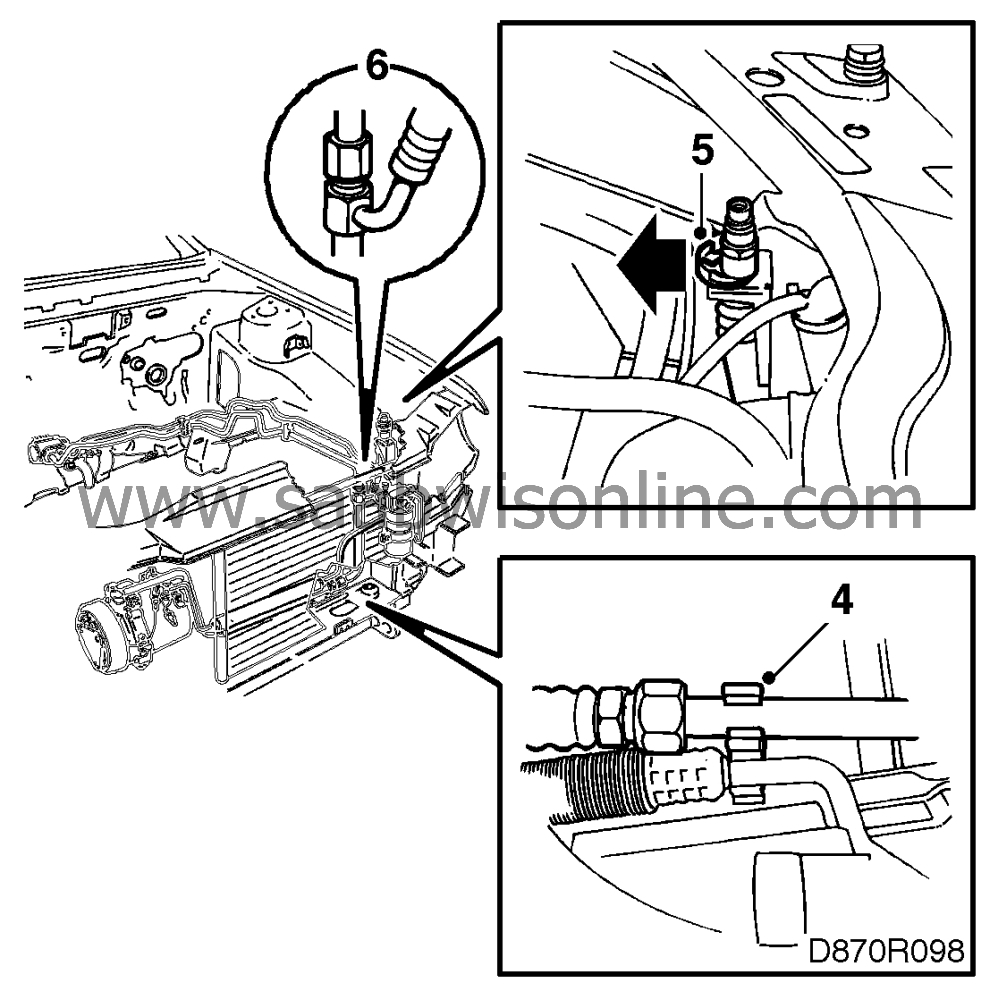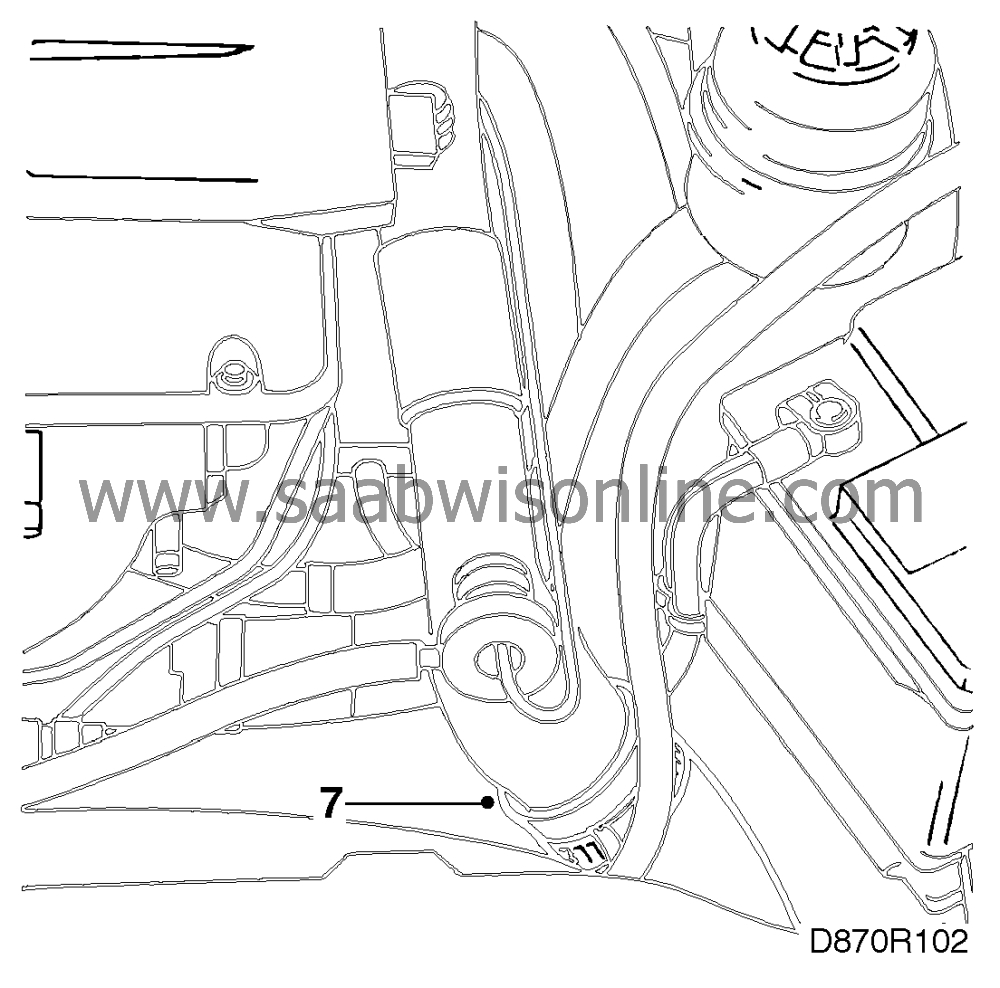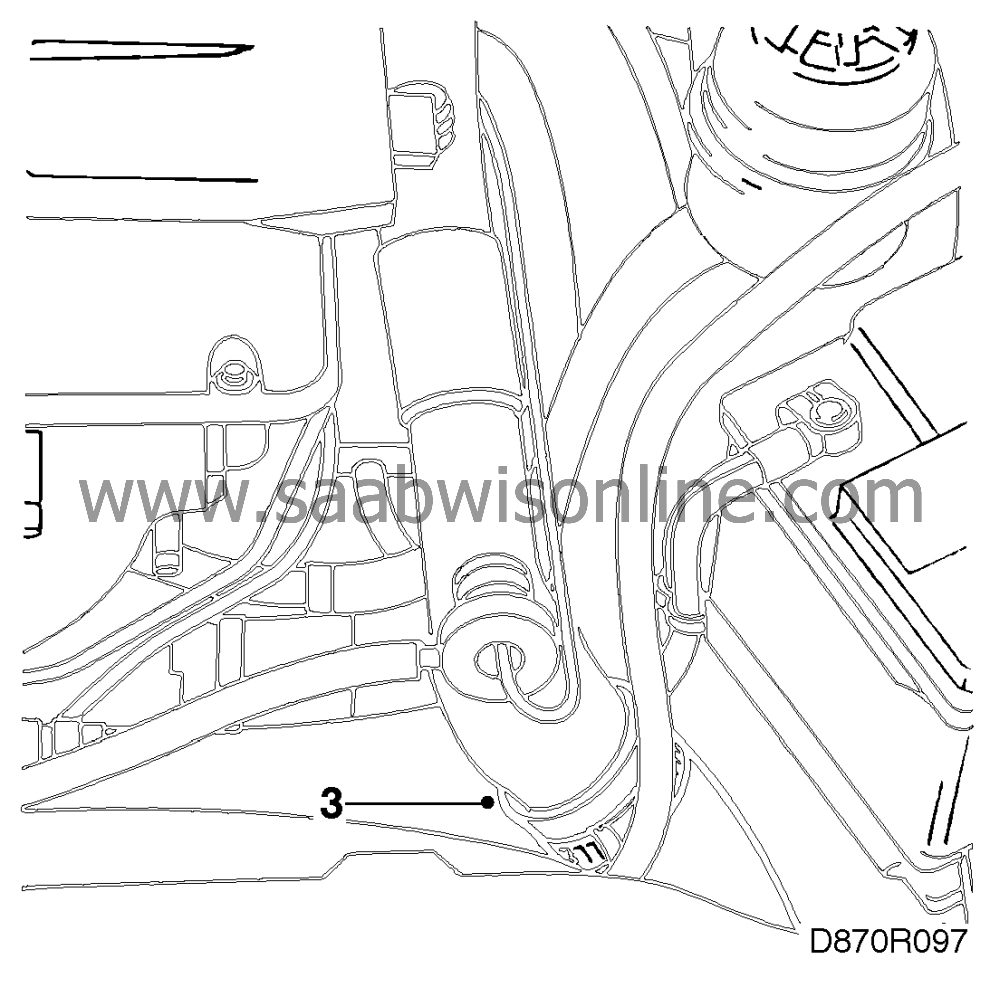The compressor's low-pressure hose
| The compressor's low-pressure hose |
| To remove |
| Important | ||
|
Both the receiver and the compressor oil absorb moisture from the air which cannot be removed. All connections which are opened should therefore be plugged immediately. |
||
| 1. |
Cars with a turbo engine: Place the car on a lift.
|
|
| 2. |
Drain the AC system of refrigerant.
|
|
| 3. |
Cars with a turbo engine: Remove the hose between the charge air cooler and the throttle body.
|
|
| 4. |
Remove the low-pressure pipe from the clip on the front cross-member.

|
|
| 5. |
Remove the clip holding the low-pressure side's service connection.
|
|
| 6. |
Remove the nut securing the low-pressure pipe to the service connection.
|
|
| 7. |
Plug the openings.
|
|
| 9. |
Plug the openings.
|
|
| To fit |

| 1. |
Refit the low-pressure pipe. On certain variants it might be easier to remove the high-pressure pipe first and then refit the low-pressure pipe.
|
|
| 2. |
Lubricate a new O-ring with synthetic vaseline. Remove the plug from the compressor's low-pressure side and fit the O-ring in place.
|
|
| 3. |
Screw the low-pressure pipe to the compressor.
Tightening torque: 20 Nm (14.8 lbf ft) |
|
| 4. |
Fit the low-pressure pipe in the connection to the low-pressure side's service connection and tighten the nut.

Tightening torque: 34 Nm (25.1 lbf ft) |
|
| 5. |
Press the low-pressure pipe into the clip on the front cross-member.
|
|
| 6. |
Refit the service connection in the holder and press on the clip.
|
|
| 7. |
Cars with a turbo engine: Fit the hose between the charge air cooler and the throttle body and tighten the hose clips.

|
|
| 8. |
Fill up with compressor oil, carry out vacuum pumping of the AC system and fill up with refrigerant.
|
|




